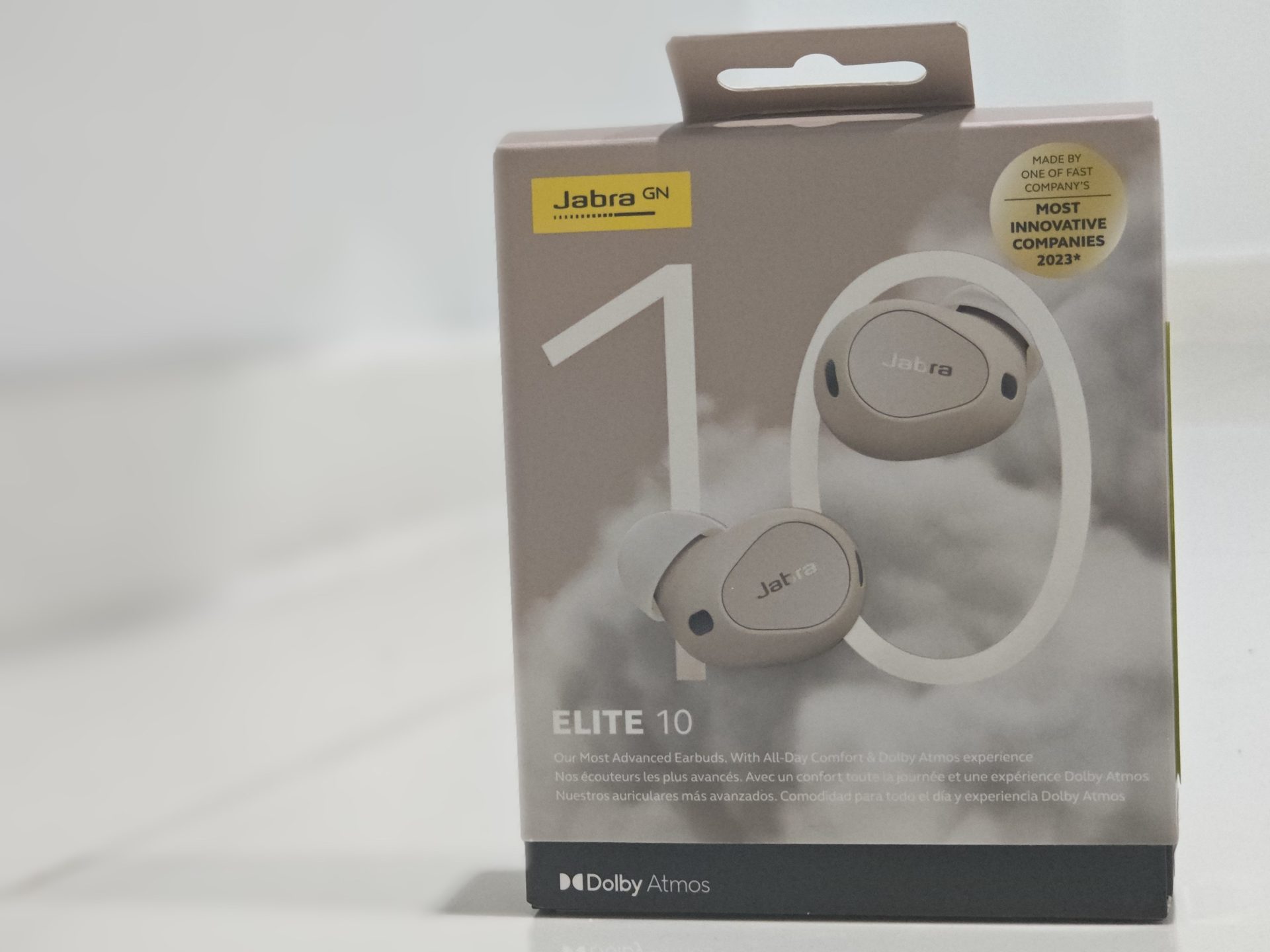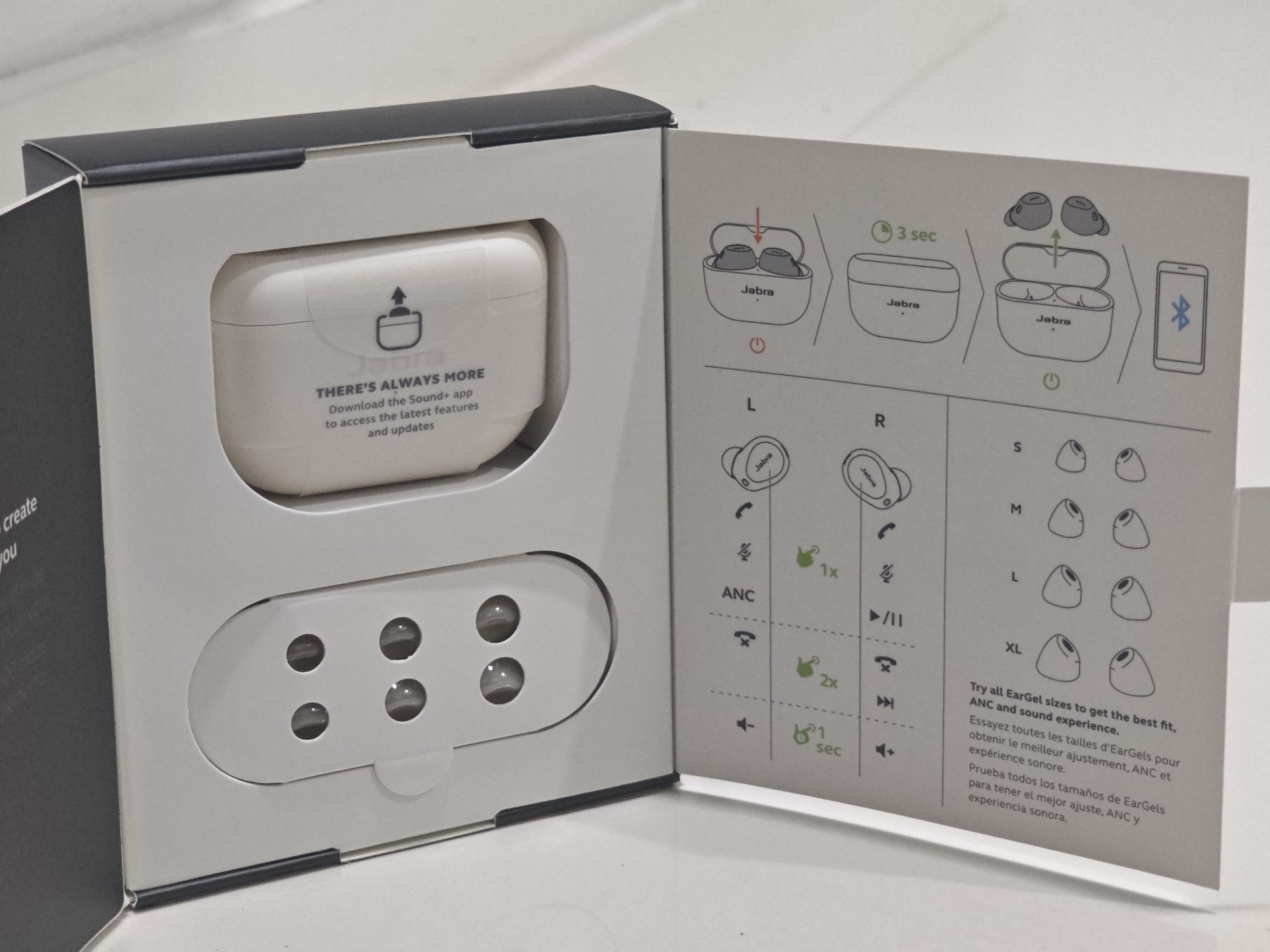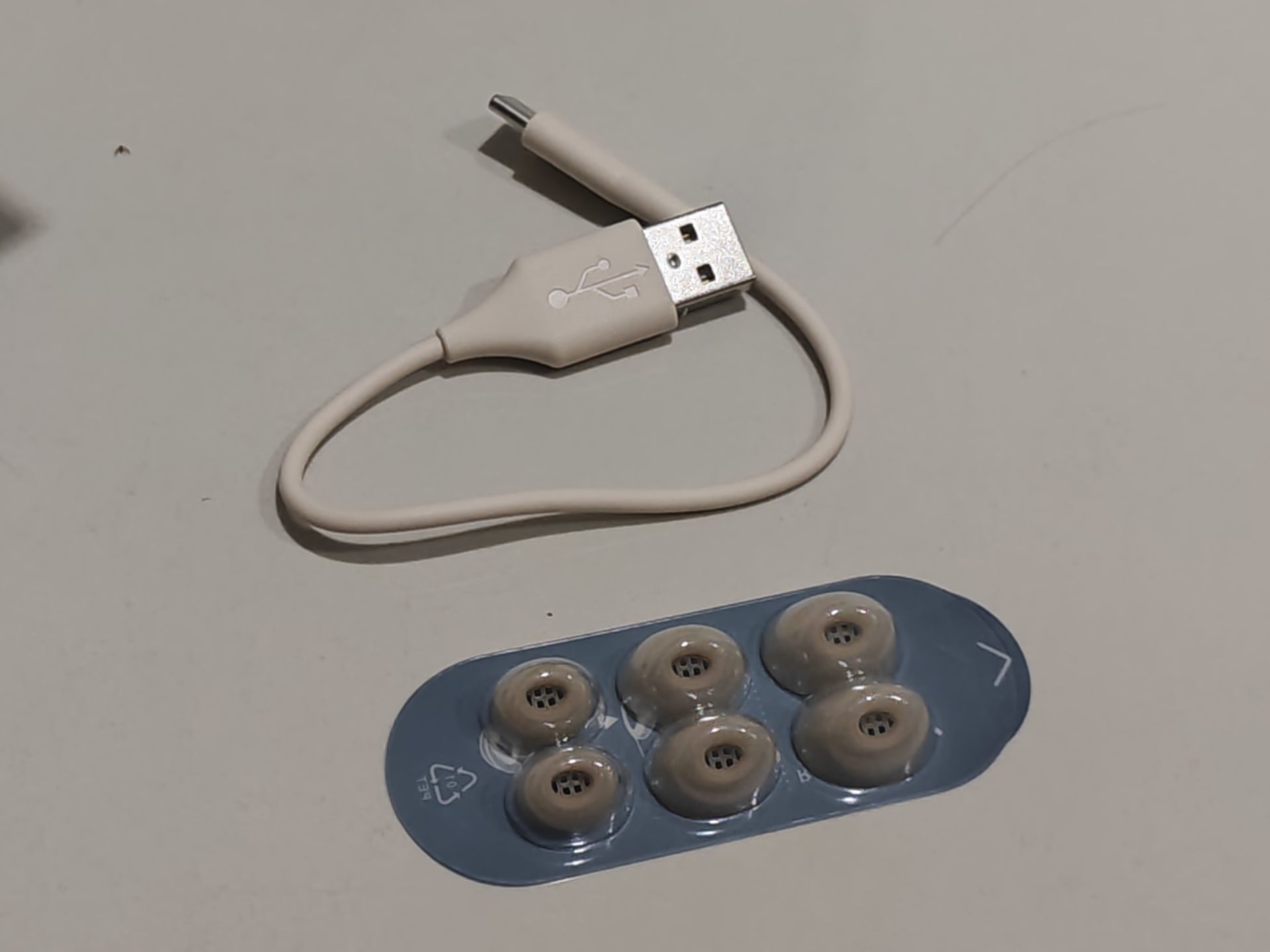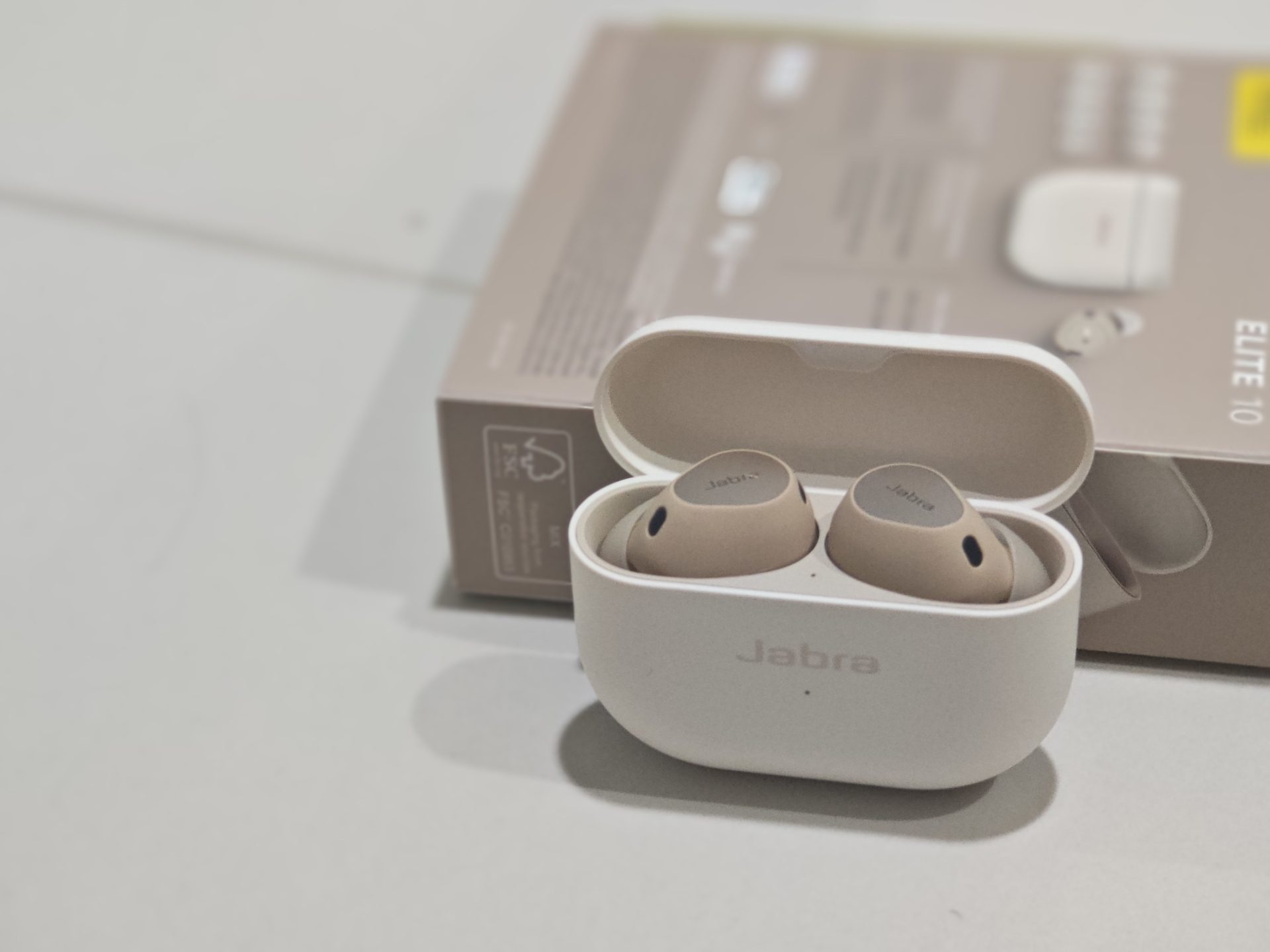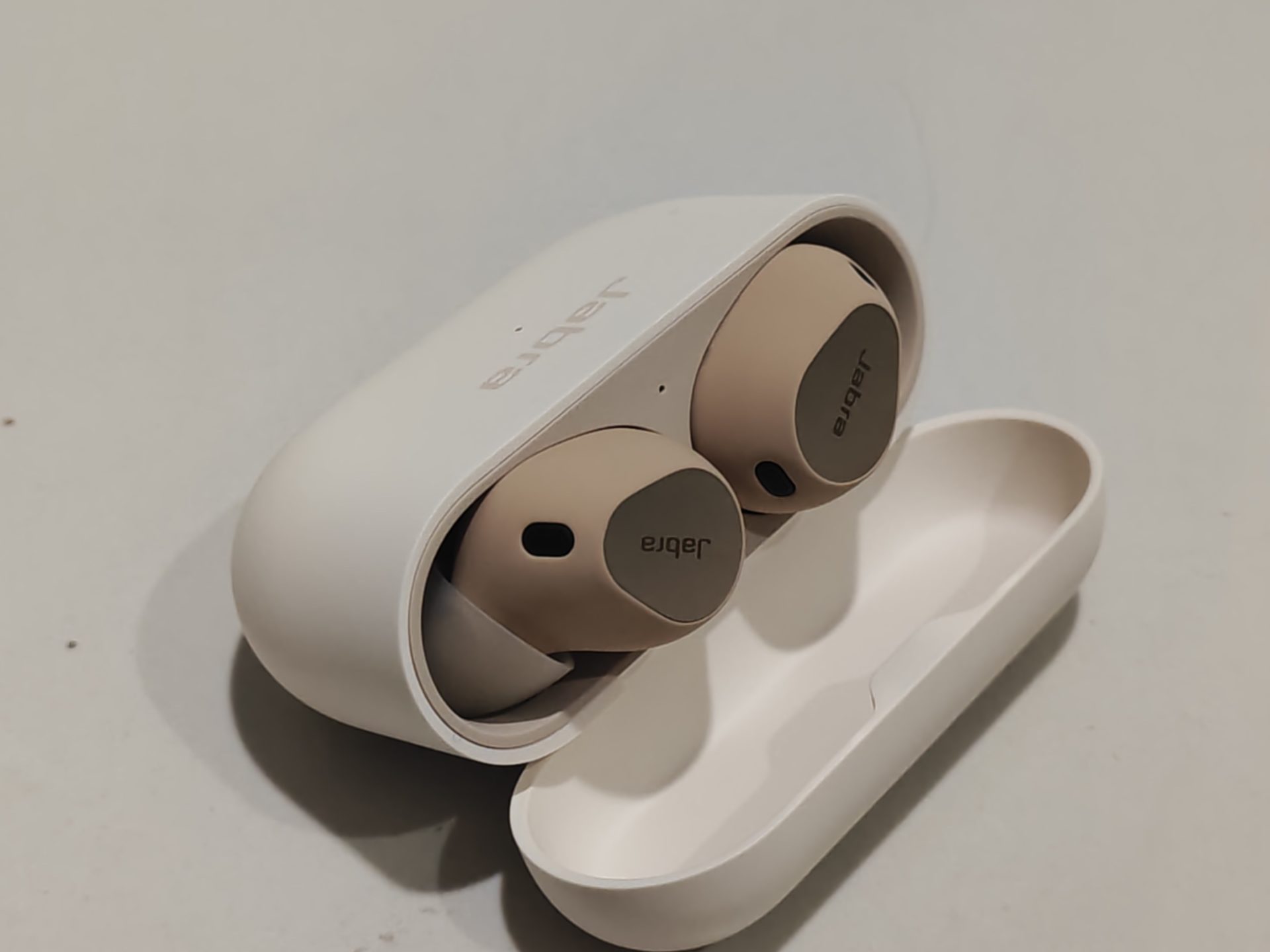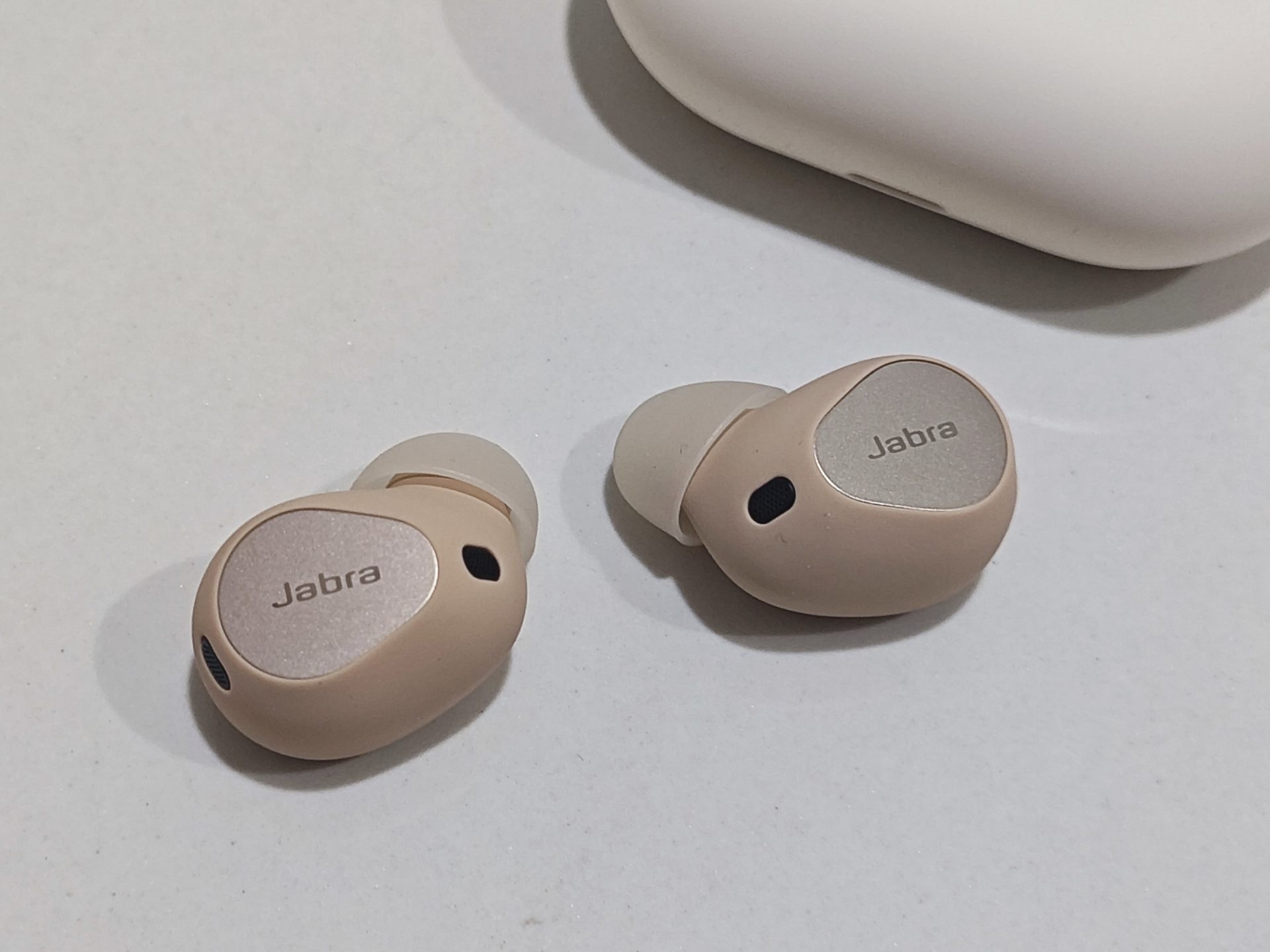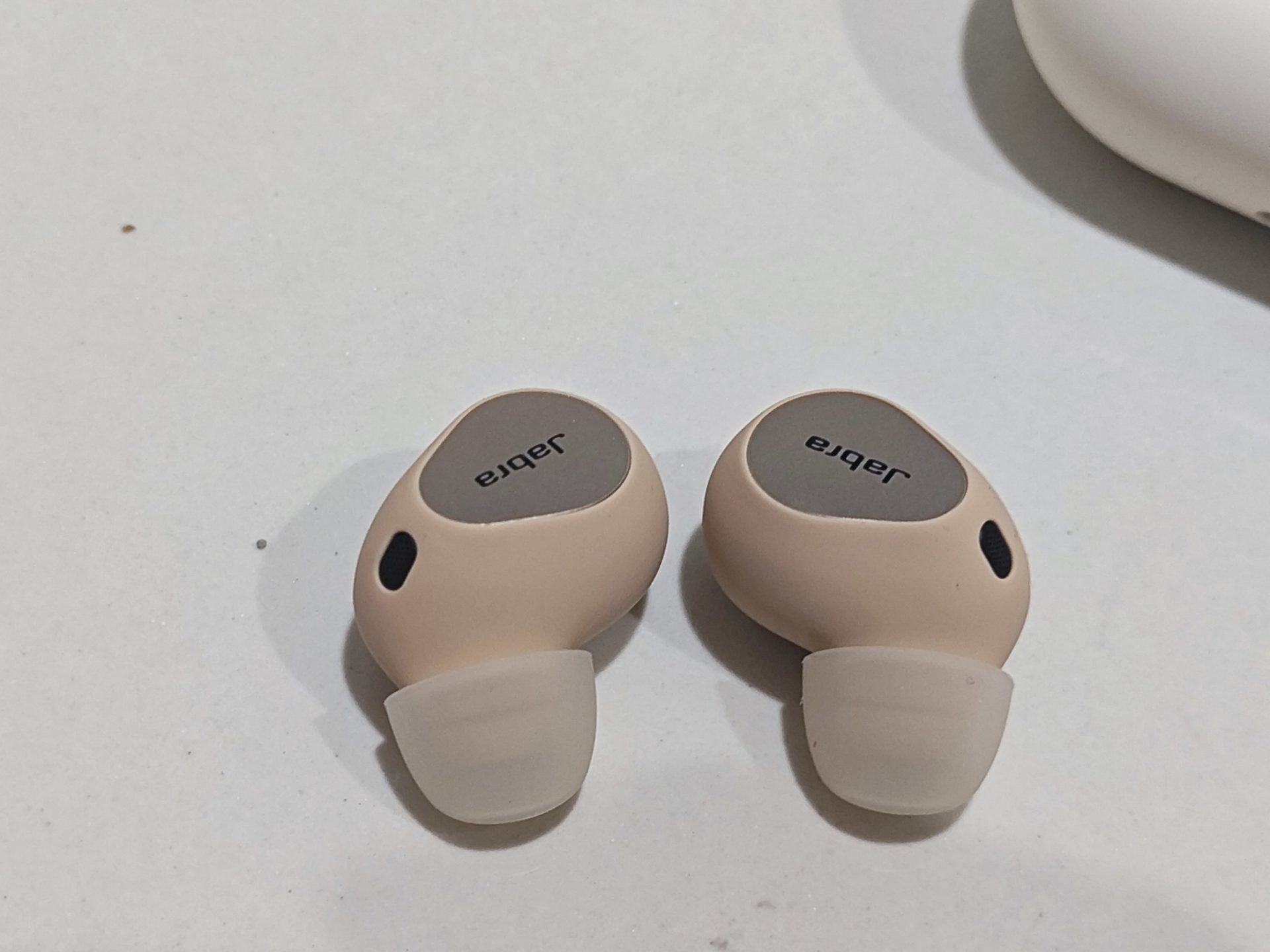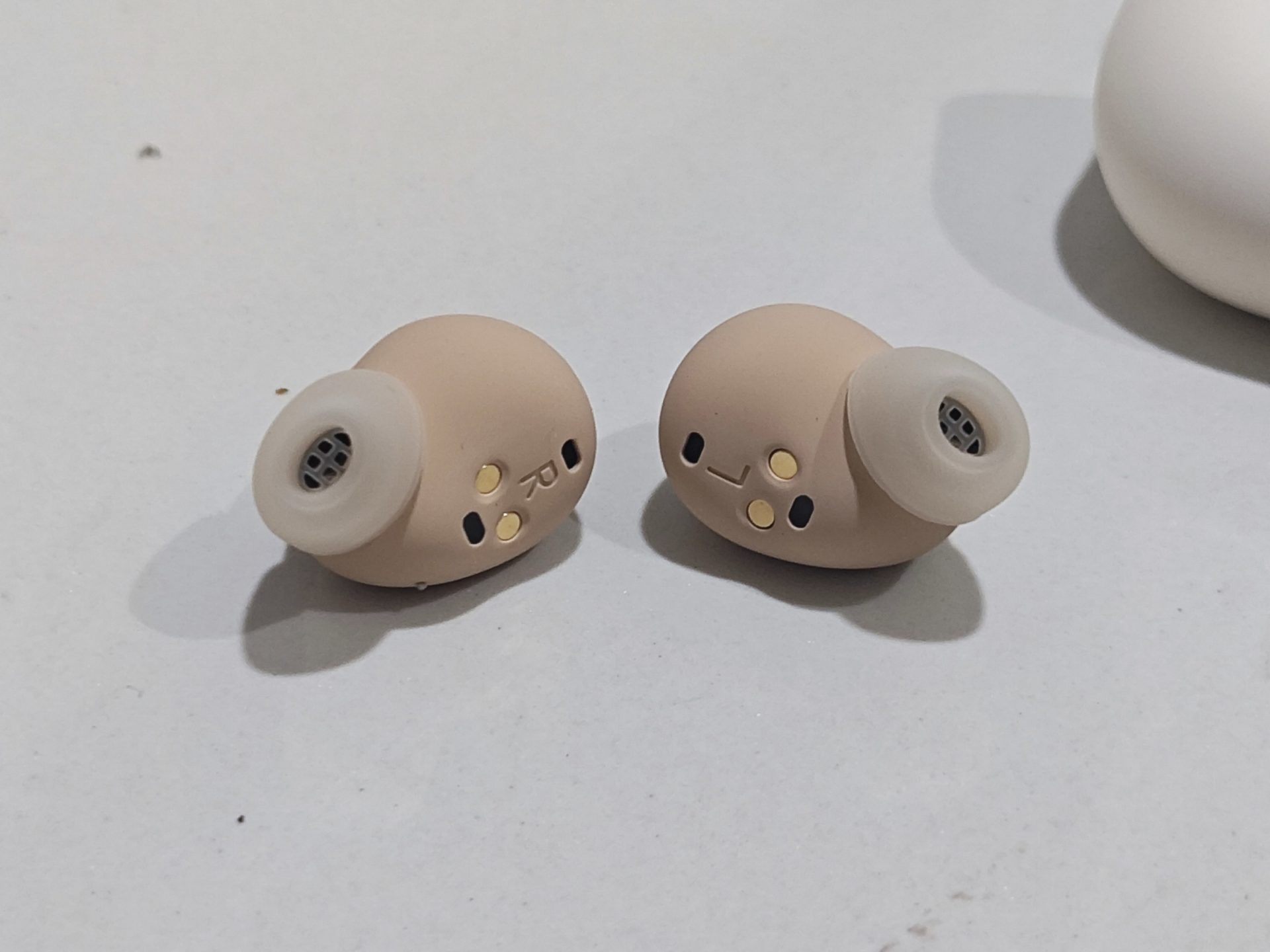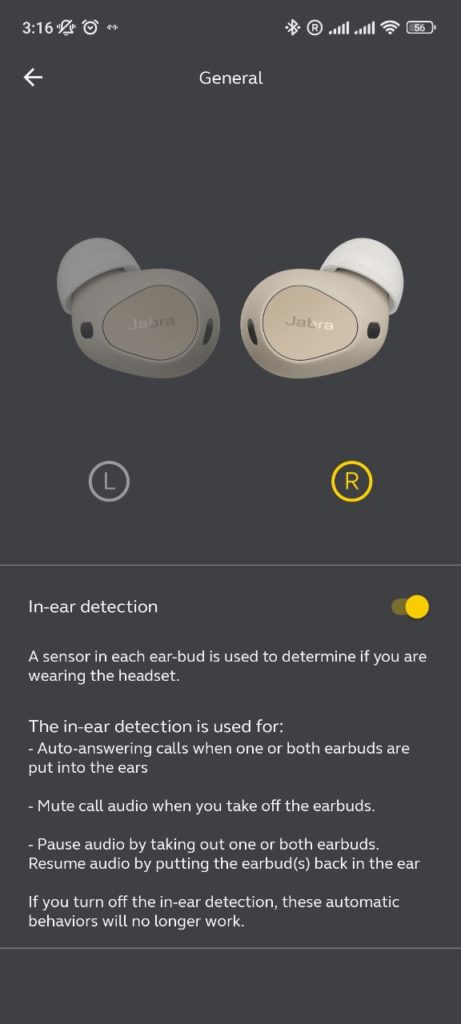As a tech reviewer, I often have the opportunity to try and test different wireless earbuds. One of the brands I personally follow is Jabra, which, with our decade of experience reviewing products of the brand, makes it safe for me to say that they make decent, sensible and down-to-earth products. This is also why I personally own a pair of Jabra Elite 4 Active as my daily driver.
When Jabra first announced their flagship Elite 10 earbuds last month, it piqued my interest. While most of Jabra products have reached a certain level of maturity, where even the most entry level products still perform well, I was wondering what a flagship product from the brand would bring to the table. On paper, we know that the Jabra Elite 10 comes with many new unique features that lets it stand out from the crowd. However, are these features actually useful, or are they just there for show? Read on to find out more.
Jabra Elite 10 – An Introduction
The Elite 10 is Jabra’s latest and greatest. Jabra has designed this product with the latest technologies, in hopes that they will win the hearts of consumers. At the heart of what makes the Elite 10 unique are the following features:
- Jabra ComfortFit
- Jabra Advanced ANC
- Dolby Atmos with Dolby Head Tracking
- 6-mic call technology
We will discuss more about each of these individual features in subsequent sections.
Within the box, we will also get EarGels of three other sizes, as well as a USB Type-C cable.
The Jabra Elite 10’s charging case looks sleek and minimal, bringing out a certain sense of beauty and dignity. However, the charging case doesn’t stand by itself anymore, unlike its sibling products. I was thinking that it could affect the user if he/she wants to take the earbuds out just one hand, but I soon realised that there isn’t any much of a difference.
Intuitively, this is also why the charging port is found at the bottom of the charging case, instead of the back side of it.
The Elite 10 earbuds looks familiar, and there aren’t too many surprises in this aspect. The Elite 10 has inherited the good designs from its predecessors, such as the use of traditional SMD push button on the side of the earbuds, instead of touch based buttons. Such buttons prevents any accidental taps, and give confidence to users. It just works as intended.
Each earbud also houses 3 microphones – 2 facing the outer side and 1 on the inner side. This is mainly used for noise cancellation, allowing the earbuds to understand noise coming from the environment and sounds coming from you.
There is also a proximity sensor found on the inner side of the earbuds. This tells the earbuds if you’ve taken the earbuds off from your ears. Intuitively, with this sensor, the earbuds will pause your songs whenever you take any one of the earbud off from your ear.
Jabra ComfortFit – Comfortable Fit, but are there tradeoffs?
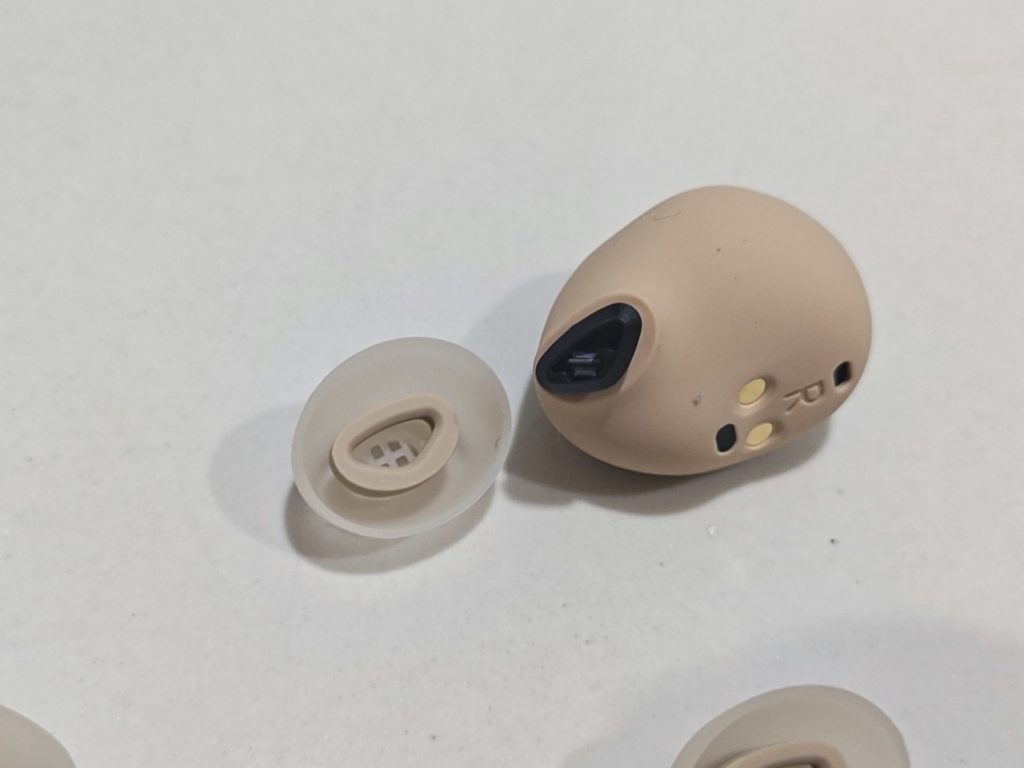
Apparently, Jabra had the impression that users aren’t that satisfied with the fit of their earbuds. Therefore, they went into research and development in order to create a new fitting for their earbuds. After completing more than 62,000 ear scans, they have created the new patent pending EarGel design, which is said to fit any ear shape perfectly.
What Jabra claims is right, as this design does indeed reduces a certain degree of in-ear pressure. It’s darn comfortable. However, I’ve got to admit that this new design requires some time to get used to. You may feel a wrong sense of insecurity at first, thinking that the earbuds may fall off any time due to such a design. The fact is that the Elite 10 will stay well secured onto your ears no matter how forcefully you shake your head.
I always think that passive noise cancellation will greatly improve the overall noise cancellation performance of the earbuds. Even though the Jabra Elite 10 features the brand’s latest and greatest noise cancellation technology, it seems to me that the new ComfortFit design impedes passive noise cancellation, limiting the true potential of what Elite 10’s ANC can deliver. This brings us to the next point
Jabra Advanced ANC – Is it really the best?
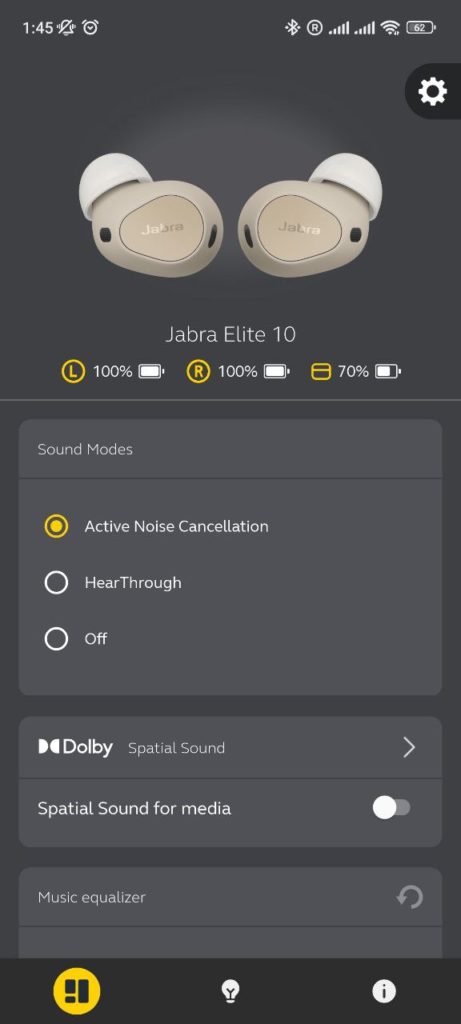
Jabra claims that their latest Advanced ANC performs two times better than their standard ANC. Honestly speaking, it’s hard for us to measure.
No doubt, the Jabra Elite 10 was able to successfully block out obvious noise with the advance ANC technology. For example, when I was taking a 4-hour flight, with ANC turned on, I would thoroughly enjoy my music without too much disturbance. However, I would say that it is questionable to say that the Jabra Elite 10’s Advanced ANC is the best. I do find my Elite 4 Active to have better overall noise cancelling when I’m in a room with the whirring of the fan/air-conditioner.
I guess with poorer passive noise cancellation, Jabra had to go an extra mile in order to keep up with the expectations of noise cancellation with ANC.
What I really liked about the ANC from the Elite 10 is its ability to adapt the level of ANC based on the environment. You can also turn of “HearThrough” mode, which allows you to hear surrounding sounds while wearing your earbuds. What’s cool is that HearThrough uses the built-in microphone to enhance external sounds and even focus on people’s voice. It’s as if you are wearing a hearing aid.
Dolby Atmos with Dolby Head Tracking – Actually useful, or just gimmicks?
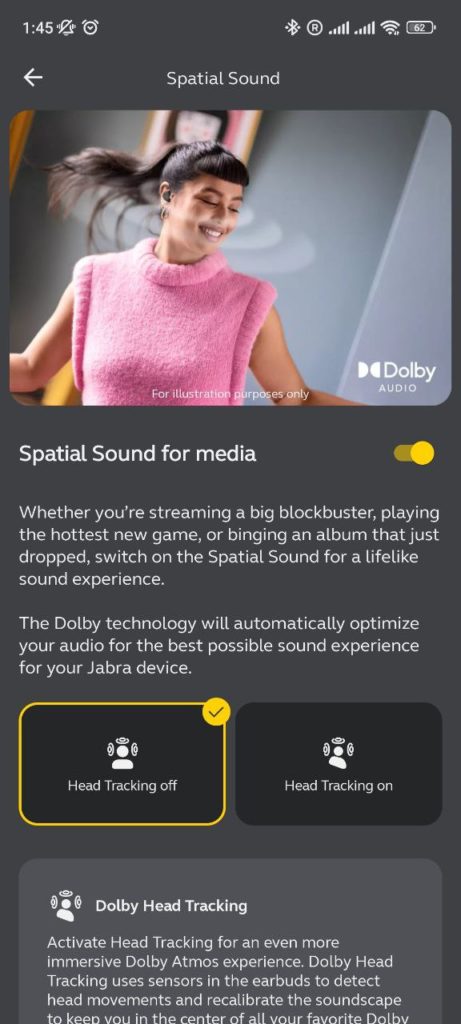
Dolby Atmos technology aims to bring surround sound to earbuds, in order to give users a more immersive experience, as if watching a movie in the theatres.
Unfortunately, I wasn’t able to appreciate this feature, especially when listening to music. With Dolby Atmos enabled, the music coming from the earbuds sounded artificially echoey. Instead of feeling like you’re right in the middle and heat of a concert, it’s more like listening to a concert when you can’t get tickets and standing outside of the venue.
As for Dolby Head Tracking feature, I just find it to be pure gimmicks. I don’t find a reason for a need of this feature. Even when watching movies, I want to be immersed in it based on how the sound director or engineer wants me to feel, rather than the position of my head.
I keep this feature off all the time, and wouldn’t mind if the Jabra Elite 10 didn’t possess it.
Is 6 the magic number of microphones for the best call experience?
As mentioned earlier, the Jabra Elite 10 has 6 separate microphones which helps the product to distinguish between background noise and your own speaking voice.
It excels in this area, with high quality calls on both caller and receiver end.
When making a call, what I spoke was able to be heard clearly by the receiving party, even when I was in a noisy environment. That was something which I was quite surprised at, as I was in a noisy factory environment, and the call with the Elite 10 was seamless.
Moreover, I was also able to hear the other party speak very clearly. Unlike previous ANC technologies, because of the limited number of microphones, active ANC had to be turned off, and all you hear will be muffled and noisy. With the Jabra Elite 10, this wasn’t an issue.
In a professional work settings, the Jabra Elite 10 works extremely well for calls and virtual conferences.
How does the Jabra Elite 10 sound?
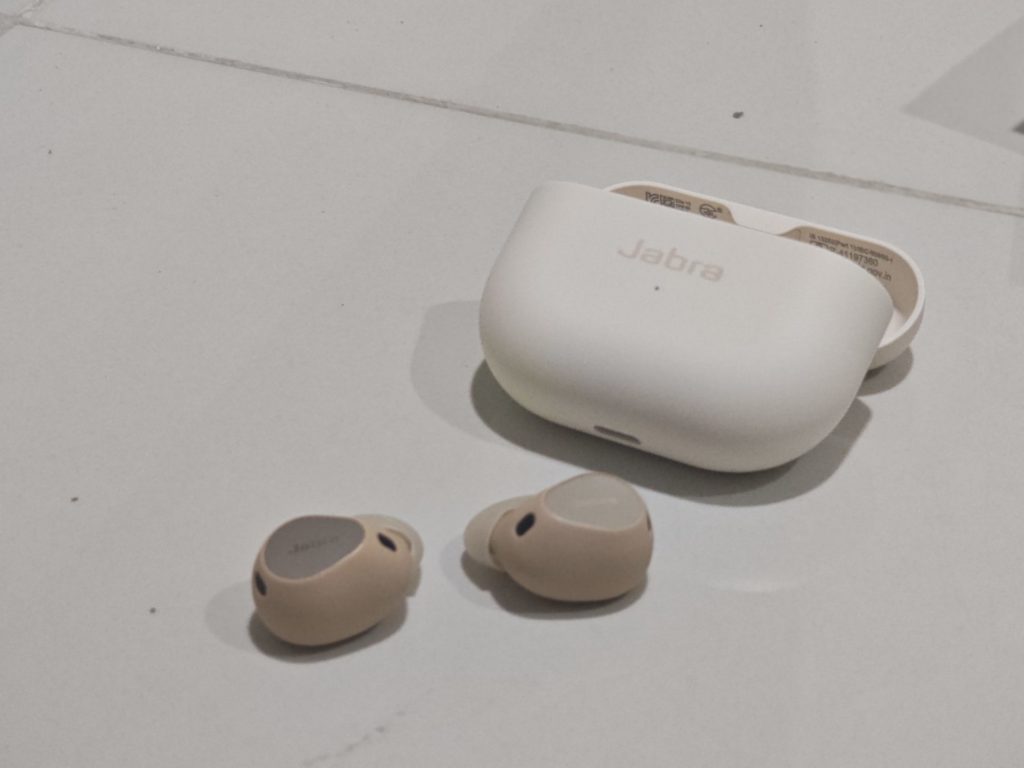
Being a flagship product from Jabra, I expected more from the Elite 10. Don’t get me wrong, as the Jabra Elite 10 still sounds great.
It had above average separation, where instruments don’t all get muffled and squashed together. Its overall sound profile was on a brighter side, with a large focus on clarity. However, I would have enjoyed it more if it had a narrower soundstage to provide that level of intimacy that I yearned.
This could be a personal preference, but I always enjoy music with a narrower soundstage, where the singer seems to be singing directly to you, into your ears. For the Jabra Elite 10, the soundstage is moderately wide, where you know that there’s some distance between you and the source of music. This could likely be one of the side effects which is introduced because of the lacking of passive noise cancellation.
Increasing the volume does help, but unfortunately, it also introduces a level of listening fatigue.
Despite some of the complains that I have, I still have to put things back into perspective. Of course, being a flagship product, I would naturally have high expectations. The Jabra Elite 10 is worthy of being a flagship product, as not many brands are able to produce such refined sound profiles on tiny ear buds. Jabra has done it, and certainly, deserves our respect.
Battery Life
The Jabra Elite 10 lives up to its rated specifications. With ANC turned on, the earbuds drained from 100% to 30% for my 4-hour flight. Jabra claims that the earbuds can last up to 6 hours per charge with ANC turned on, so these numbers line up.
I didn’t meet any battery related issues when using the Elite 10, whenever I wanted to use the earbuds, it’s always well charged and ready to serve me for the day. I simply had to charge up the charging case once every 3 to 4 days.
Jabra states that with the charging case, you can achieve up to 36 hours music total time with ANC turned off.
Final words and Conclusion
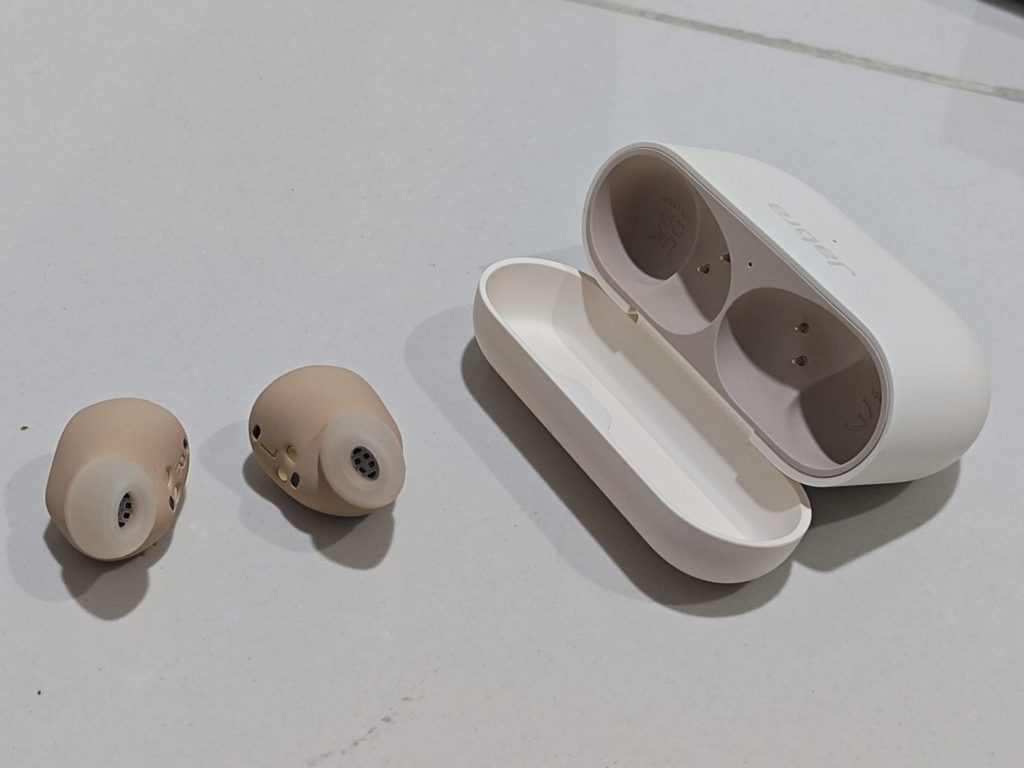
The Elite 10 showcases some of the latest technologies from Jabra, and certainly sets it apart from any other wireless earbuds in the market. However, I don’t find all the implementations of the new features to be adequate or useful, as there seems to be tradeoffs made in order to let things work.
Putting my complains aside, the Jabra Elite 10 is considered to be an all-rounder. Its focus on sound clarity and well-defined audio separation sets itself aside from an ocean of products in the market. Its unbeatable call quality and experience is also commendable. Moreover, its long battery life was able to serve us well beyond my daily needs.
Certainly, if those are the key aspects of the wireless earbuds that you are looking for, then look no further. There isn’t another product that performs just like the Jabra Elite 10.


